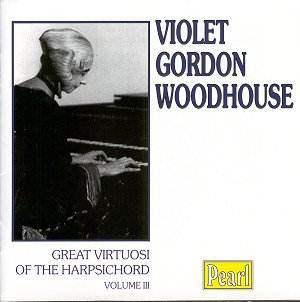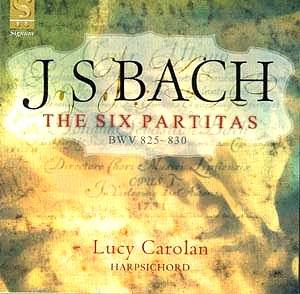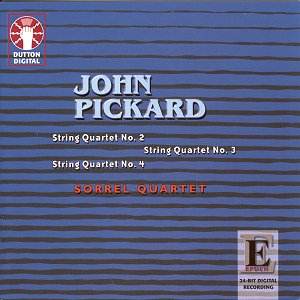 Composer: Violet Gordon Woodhouse
Composer: Violet Gordon Woodhouse
Works: Henry Purcell – Gavotte in G Major; J.S. Bach – French Suite No. 4: Prelude, Fugue in D Minor, Toccata in E Minor, Partita No. 1: Allemande, English Suite No. 1: Prelude, Italian Concerto; Clavierbuchlein für Anna Magdelena Bach: 3 Pieces; Well-Tempered Clavier: Prelude and Fugue No. 1; J.P. Rameau – Suite in E Minor: Tambourin; François Couperin – Pièces de clavecin: L’Arlequine; Giles Farnaby – Nobody’s Gigge; Domenico Scarlatti – Sonata K29, Sonata K113; John Bull – Galliard FVB185; George Frideric Handel – Suite No. 5: Harmonious Blacksmith; William Byrd – Earl of Oxford’s Marche, The Queen’s Alman, Galiarda, Rowland or Lord Willobie’s Welcome Home; Joseph Haydn – Keyboard Sonata No. 37 Hob. XVI, 37
Performers: Violet Gordon Woodhouse, harpsichord and clavichord
Recording: 1920-1942
Label: Pearl GEMM CD 9242 [78’04]
The latest release of Violet Gordon Woodhouse’s recordings showcases the extraordinary talent of a musician often overshadowed by the peculiarities of her life story. Born in 1871, Woodhouse emerged as a pioneer of the harpsichord, yet her legacy has been marginalized by her personal dramas. This collection spans a remarkable range of repertoire—from the baroque suites of Purcell, Bach, and Rameau to the intricate dances of the English virginalists, revealing her deep engagement with early music. These performances not only capture the essence of the works but also reflect Woodhouse’s dedication to reviving and popularizing the keyboard music of the past.
The performances on this disc are marked by an individuality that transcends mere technical proficiency. Woodhouse’s interpretations, particularly of Bach’s French Suite No. 4 and the Italian Concerto, demonstrate a nuanced understanding of baroque sensibilities. Her avoidance of a rigid metronomic pulse breathes life into the music, as evidenced in the Allemande from the Partita No. 1, where she imbues each phrase with subtle rubato, allowing the melodic lines to unfold organically. This is in stark contrast to the more aggressive interpretations of contemporaries like Wanda Landowska, who favored a grander, more extroverted style. Woodhouse’s approach is intimate, her harpsichord’s delicate resonance complementing her sensitive touch, creating an atmosphere that invites introspection.
Recording quality presents both challenges and rewards. The acoustic recordings from 1920 to 1942 display a certain fragility inherent to the medium, yet they possess an undeniable charm that gives listeners a glimpse into the past. The sound is perhaps less polished than modern recordings, yet this allows for a raw authenticity, aligning with the historical context of the performances. The vibrato effects introduced by Arnold Dolmetsch in the instruments used are intriguing, albeit at times distracting, as they can obscure the clarity of articulation expected in baroque performance practice. Nevertheless, the warmth of Woodhouse’s playing shines through, especially in her renditions of the English virginalists, where her expressive phrasing and dynamic gradations reveal a profound musicality.
Particularly striking is Woodhouse’s interpretation of Purcell’s Gavotte, which, while stolid at times, offers a groundedness that paves the way for the vivacity found in Rameau’s Tambourin. Her use of tempo rubato in the Harmonious Blacksmith is a masterclass in subtlety; she navigates the piece with an ease that belies its technical challenges, contrasting with Landowska’s more visceral approach. The Byrd selections further highlight her affinity for the English repertoire, showcasing her deft articulation and the ability to capture the essence of each dance-like piece.
The surviving 1941 BBC broadcast included here provides an invaluable snapshot of Woodhouse’s artistry, featuring her clavichord playing in a rare performance context. The historical significance of this recording cannot be overstated; it not only reinforces her place in the lineage of early music performance but also serves as a reminder of the enduring legacy of her contributions to the field. The interplay of her spoken voice with her music adds a personal dimension, creating a connection that transcends time.
Violet Gordon Woodhouse emerges from this collection not merely as a historical curiosity but as a formidable musician whose interpretations invite us to reconsider our understanding of early music performance. This disc captures her artistry with fidelity and depth, illuminating the profound impact she had on the revival of the harpsichord and the broader early music movement. The combination of her unique interpretative choices and the historical context of her recordings make this release an essential addition to the repertoire of any serious aficionado of early keyboard music.



